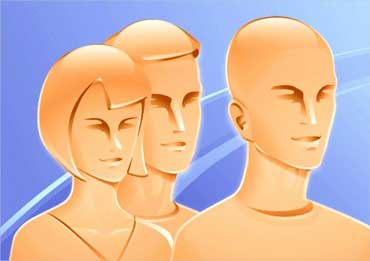
When Ranjana Sheroff (name changed), a 30-year-old Delhite, was chatting with her ex-boyfriend on Facebook, little did she know a couple of flirtatious comments on the social networking site would land her in a divorce suit.
Her husband Sanjay Sharma (name changed) used her comments to file for a divorce on grounds of mental cruelty. Sonal's few casual comments ended their marriage of six years.
With social networking sites becoming an integral part of our lives, experts believe using digital traces for legal purposes will only rise in future.
...

Ritesh, a 28-year-old IT professional, used his wife's professional profile in LinkedIn to settle claims for maintenance. When he filed for a divorce, his wife Pooja (25) claimed for maintenance.
Ritesh who was earning Rs 80,000 a month claimed his wife had better career prospects than him, so paying for her maintenance made no sense.
At the time of filing for divorce, she was earning Rs 40,000, but it was difficult to establish Pooja's "better career path".
...

Ritesh's lawyer made use of her Linkedin profile to prove she had a brighter career ahead.
He also used photographs posted by Pooja on Picasa, an online photo sharing platform by Google as evidence.
The picture that was taken in Germany, where she was posted for a project, was used to establish she was doing well.
The court acknowledged the documents and Ritesh was made to pay only Rs 8,000 a month as maintenance against Rs 15,000 as claimed by Pooja.
...

With the court acknowledging the use of digital data as evidence for getting a divorce, more and more couples are making use of electronic traces to file for divorce.
In the past three months, in Delhi-NCR at least 20 couples have approached the court for a divorce using digital proofs.
Usually, people in the age group of 25-30 years are using digital proofs, said Osama Suhail, associate partner of ANZ LAWZ, which runs a portal called DivorceLawyers.co.in.
He believes that while the postings on the websites may not lead to any conclusion, they give an indication about a person's character and nature.
"These facts are otherwise difficult to establish in the court," he added.
...

Since using digital evidence requires knowledge of the Information Technology Act, divorce lawyers take help of cyber law experts to work on the evidences.
The Information Technology Act, Section (4), gives legal basis for use of electronic documents as evidences.
Supreme Court advocate and cyber law expert Pavan Duggal said: "At least eight couples in the recent past have come to me for advice to use digital data as divorce evidence."
Hena Jawed Khan, an HRD specialist and also a trained counsellor said: "These days people lead a parallel life on the Web.
In reality, a husband or a wife may not be so casual while communicating with their old flames but on the networking sites they let their guards down."
...

Use of such documents has a flip side as well; they can be easily misused. Like in case of Sonal Shah and Ajit Shah (names changed).
A year into their marriage Sonal realised she was lured into the marriage and filed for an annulment.
She discovered that Ajit was using her ATM card to withdraw money from her account without her consent.
When Ajit got the court notice, he e-mailed 25 to 30 of his relatives and friends complaining about Sonal's parents trying to ruin their marriage.
Later, Ajit used those documents as a tool to defend his case.
As more and more people get onto the Web and start creating an identity, it will only further blur the line between real and digital life.